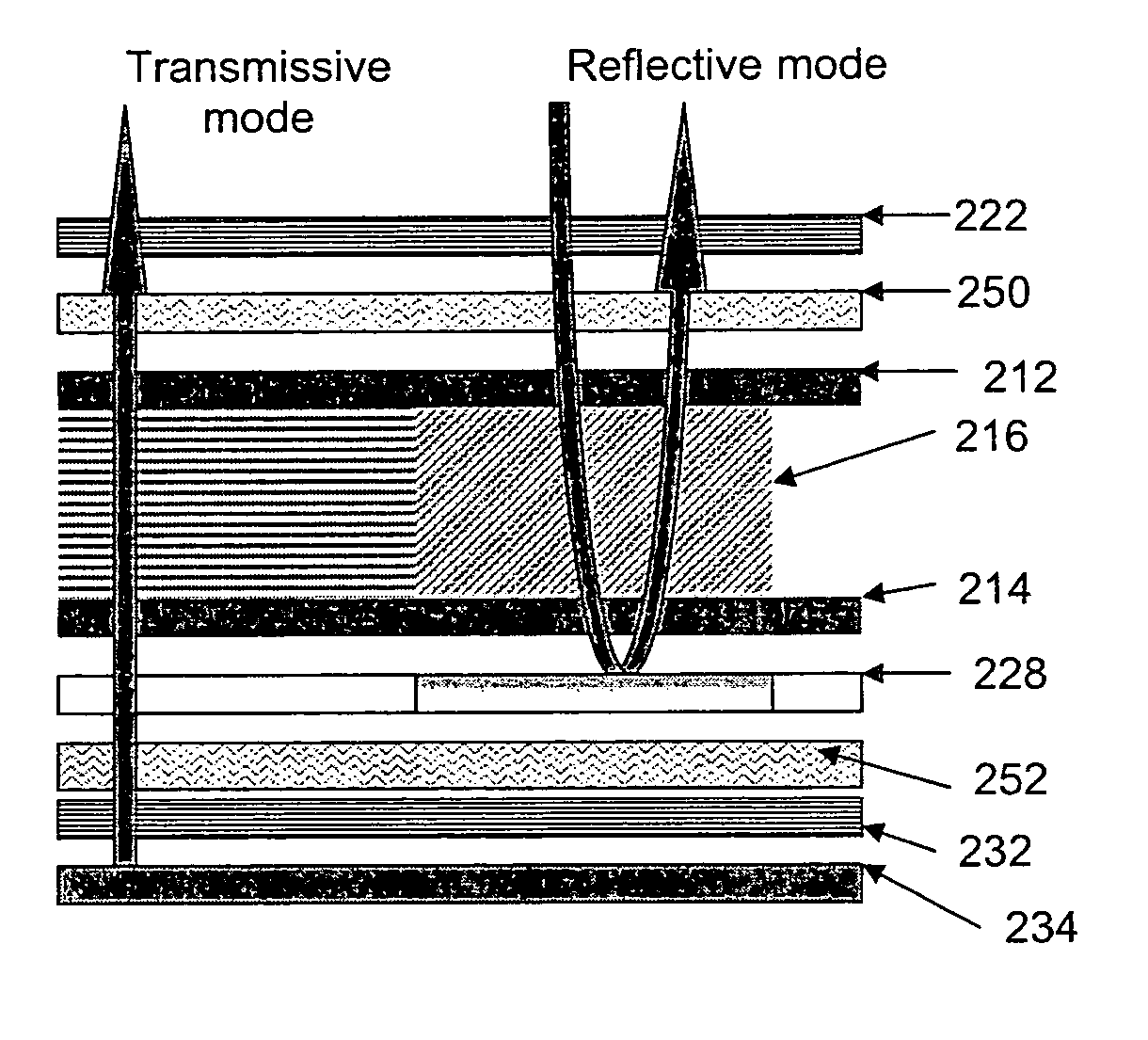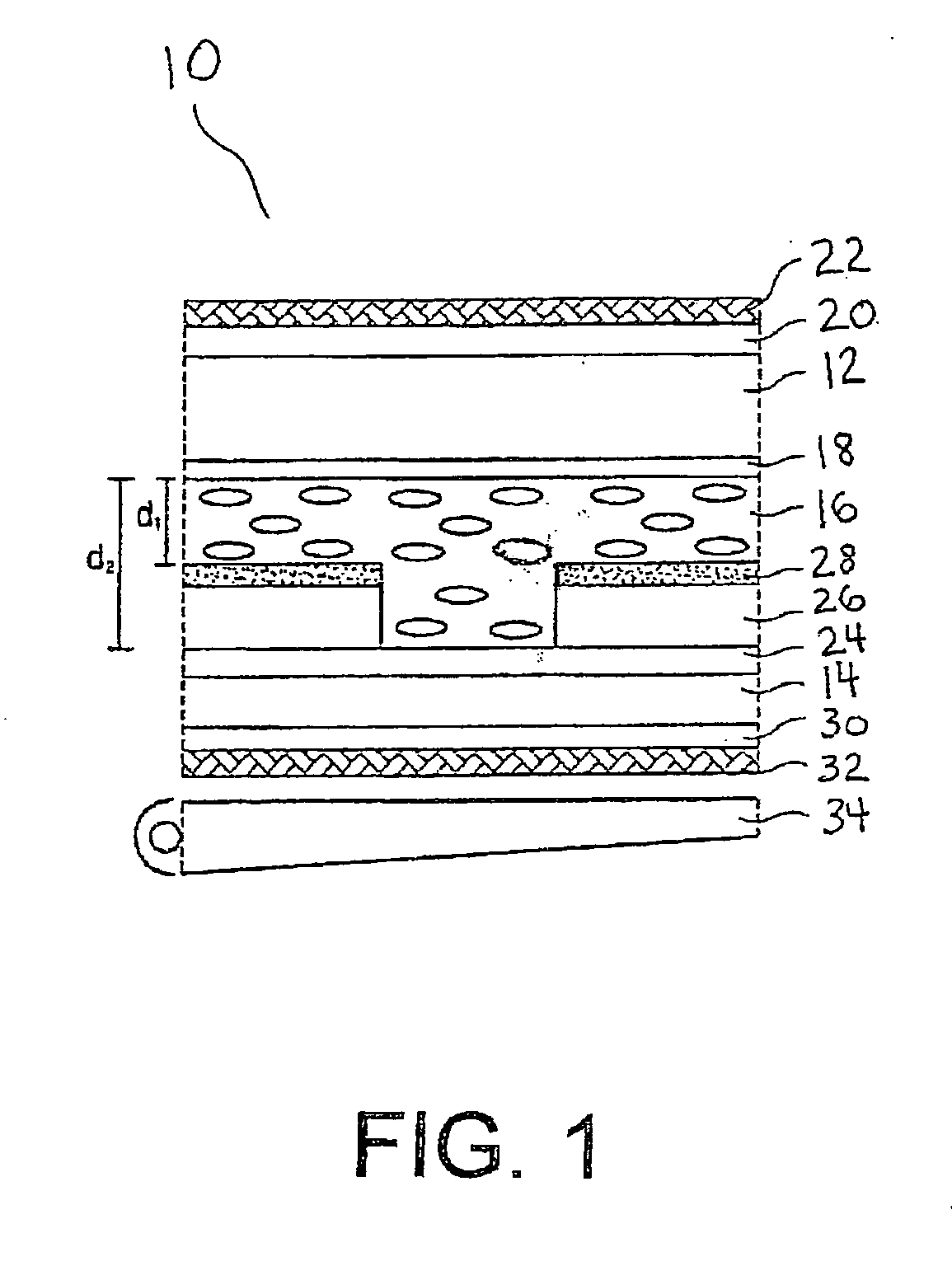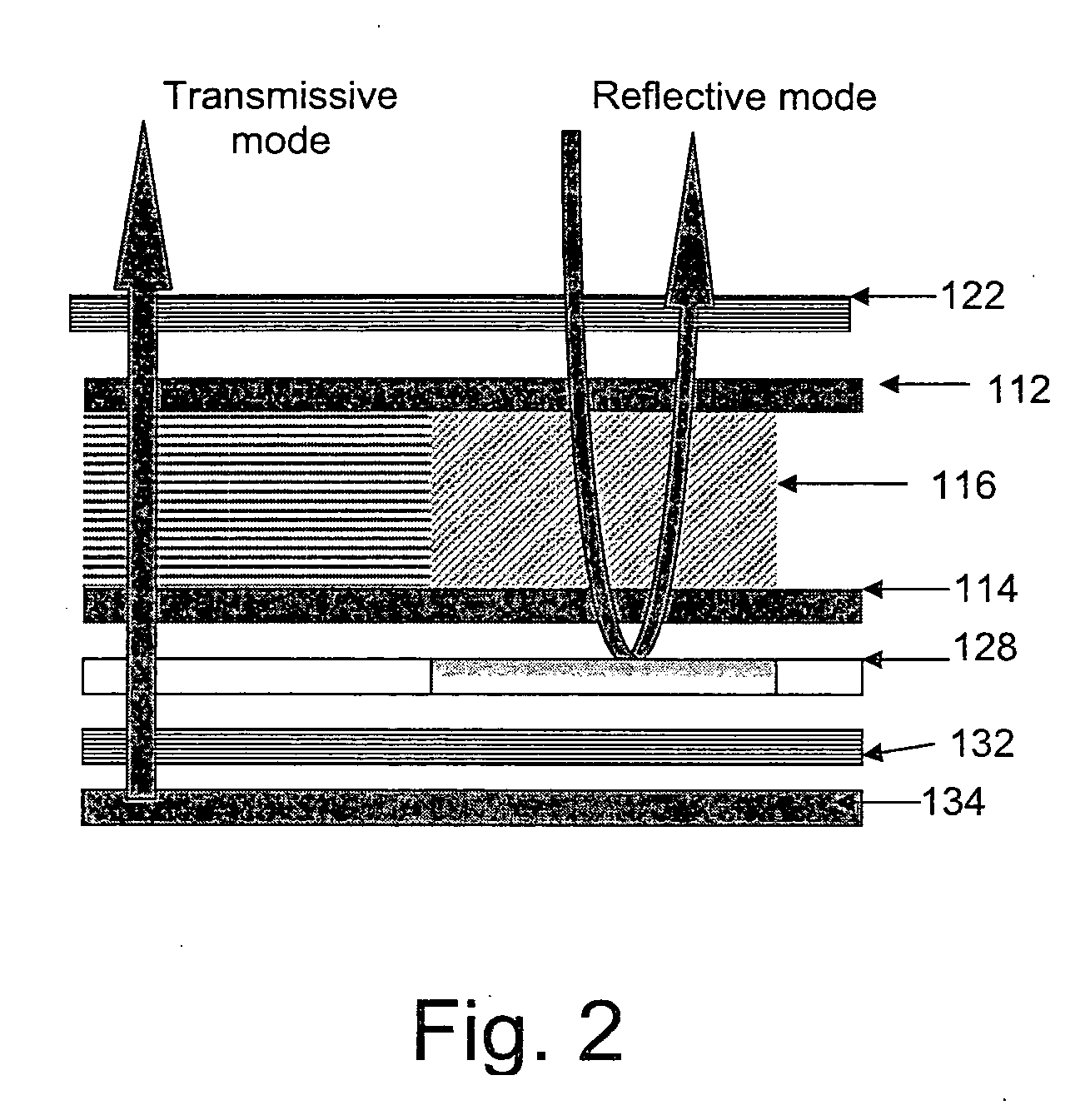Polymer stabilized electrically controlled birefringence transflective LCD
a technology of transflective liquid crystal displays and polymer stabilized materials, applied in optics, non-linear optics, instruments, etc., can solve the problems of unreadable reflective lcds, reflective lcds becoming more difficult to read, reflective lcds consuming very low power, etc., and achieve the effect of improving device stability
- Summary
- Abstract
- Description
- Claims
- Application Information
AI Technical Summary
Benefits of technology
Problems solved by technology
Method used
Image
Examples
examples
[0051] A mixture of nematic liquid crystal ZLI-4469-100 96.7 wt % (available from Merck), a mesogenic diacrylate monomer 3 wt % (lab. made) and photo-initiator benzyl methyl ether 0.3 wt % (available from Polyscience). The mixture was filled into cells consisting of two parallel glass plates with the cell gap of 5 micron. The cells had homogeneous alignment layers. The cells were irradiated under UV light to polymerize the monomer at various voltages. At zero voltage, the liquid crystal oriented parallel to the cell surface along the rubbing direction of the alignment layer. When a voltage above zero was applied to cell, the liquid crystal was tilted toward the normal direction of the cell. The higher the applied voltage, the more the liquid crystal was tilted toward the normal direction. The polymer network formed favored the state in which the polymerization took place.
[0052] After curing, the electro-optical properties of the cells were measured using a He—Ne laser with the wave...
PUM
| Property | Measurement | Unit |
|---|---|---|
| Percent by mass | aaaaa | aaaaa |
| Weight | aaaaa | aaaaa |
| Thickness | aaaaa | aaaaa |
Abstract
Description
Claims
Application Information
 Login to View More
Login to View More - R&D
- Intellectual Property
- Life Sciences
- Materials
- Tech Scout
- Unparalleled Data Quality
- Higher Quality Content
- 60% Fewer Hallucinations
Browse by: Latest US Patents, China's latest patents, Technical Efficacy Thesaurus, Application Domain, Technology Topic, Popular Technical Reports.
© 2025 PatSnap. All rights reserved.Legal|Privacy policy|Modern Slavery Act Transparency Statement|Sitemap|About US| Contact US: help@patsnap.com



